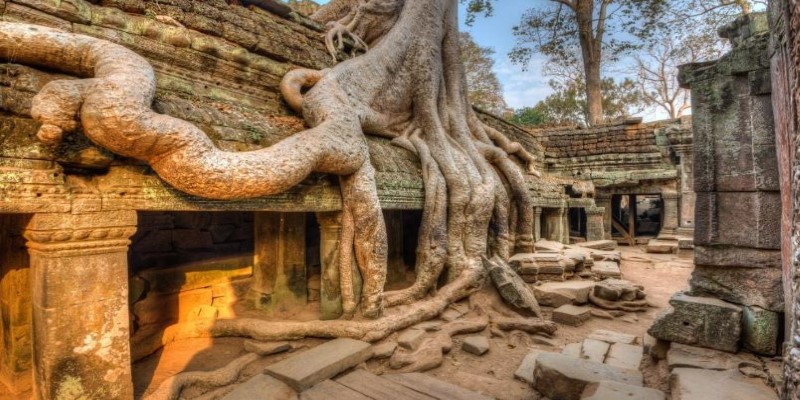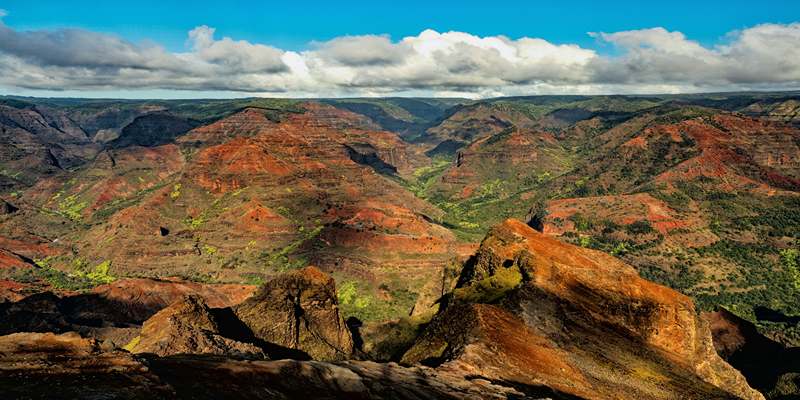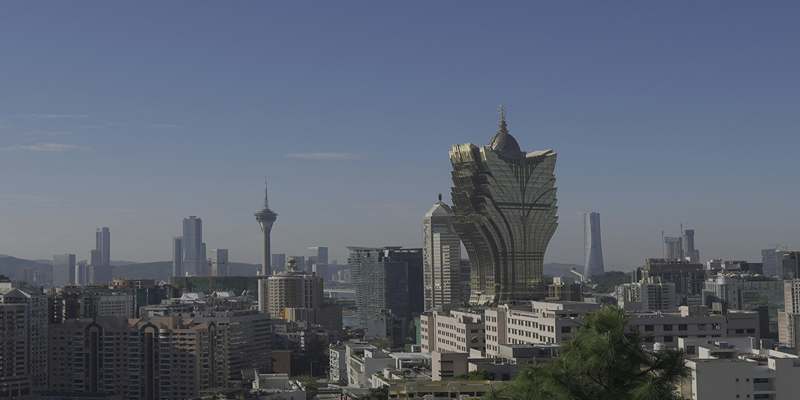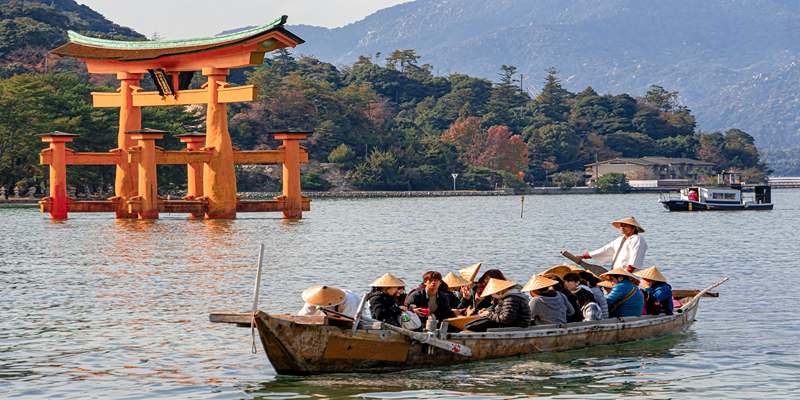The ruins of Ta Prohm Temple whisper a story of time’s unstoppable march. Nestled within the Angkor complex in Siem Reap, Cambodia, this temple stands in the grip of massive tree roots that twist through its ancient stone walls. Unlike its well-preserved neighbor, Angkor Wat, Ta Prohm is a place where nature has reclaimed its hold, creating a mesmerizing blend of history and wilderness.
Sunlight filters through the knotted branches, dropping shadows upon the moss-draped ruins. Each step within feels as though entering a world forgotten where the past remains untouched and unshaken beneath the burden of centuries-old trees.
A Temple Frozen in Time
Ta Prohm is one where nature and history have blended into one. Construction during the late 12th century by King Jayavarman VII, the magnificent Buddhist monastery where monks, scholars, and servants once resided. Centuries of disuse, though, permitted the jungle to recover the site, enshrouding its walls with a smothering embrace. Unlike most temples in the Angkor complex, which have been carefully restored, Ta Prohm was left on purpose in a state of natural deterioration—a "living relic" where time and erosion speak for themselves.
Enormous silk-cotton and strangler fig trees overflow its corridors, their roots forcing apart old stone while keeping it together. Walls covered with worn carvings of celestial apsaras speak of a forgotten empire, their edges worn away by moss and weathering. Gaps of light seep through broken ceilings, casting moving shadows over the temple's decaying galleries. Some doorways still stand, others engulfed by twisted roots, making pathways into surreal ruins.
Striding through Ta Prohm is like entering a forgotten world, where wood and stone, past and present, hang in a precarious, ghostly balance—only to be eventually lost to nature.
The Struggle Between Stone and Jungle
Ta Prohm's most striking feature is the way the jungle has overtaken it. The strangler fig and silk-cotton trees have grown into the very foundation of the temple, their roots acting as both destroyers and protectors. Some roots pry apart the stones, while others act as natural braces, holding up what would otherwise collapse. It is a delicate balance where the forces of growth and decay meet in a hauntingly beautiful display.

The scale of the trees at Ta Prohm is staggering. Some roots cascade over doorways like frozen waterfalls, while others wrap around pillars as if clinging to the past. Certain sections of the temple only stand because of this tight embrace between stone and wood. In other places, the relentless force of nature has caused entire walls to crumble. Walking through the temple feels like stepping into a lost world, where history is not just preserved in stone but also written in the roots and vines that twist through every crack.
Ta Prohm and Its Place in History
While Ta Prohm is now one of the most visited sites in the Angkor region, it was once hidden from the world. After the fall of the Khmer Empire, the jungle reclaimed the temple, burying it under thick vegetation for centuries. It wasn’t until the 19th century that French explorers stumbled upon the ruins, and even then, much of Angkor remained a mystery to the outside world.
In modern times, Ta Prohm gained worldwide fame after being featured in films like Tomb Raider, where its eerie beauty became the perfect backdrop for an adventure lost in time. Yet, beyond its cinematic appeal, the temple holds a deeper historical significance. It is a reminder of the Khmer Empire's grandeur and the transient nature of human creations. The once-thriving monastery, now a silent ruin, stands as a testament to both human ingenuity and the relentless force of nature.
Despite the crowds that now visit daily, there are moments of stillness within Ta Prohm. Walk through its shadowed corridors at the right time, and the sounds of footsteps fade into the distant echoes of history. The whispers of ancient monks, the rustling of leaves, and the slow shifting of stone seem to fill the air. It is a place where past and present blur, where history is not just remembered but felt.
Preserving Ta Prohm for the Future
Ta Prohm's breathtaking ruins attract thousands of visitors each year, but this popularity comes at a cost. The weight of foot traffic, combined with the constant pressure of tree roots pushing against fragile stones, presents an ongoing challenge for conservationists. Preservation efforts focus on maintaining the temple's delicate balance—allowing nature to remain intertwined with the ruins while preventing further collapse.

Restoration teams work to reinforce structures at risk of crumbling, carefully ensuring that interventions do not strip the temple of its character. Wooden walkways have been added in certain areas to reduce wear on the stone floors, and measures have been taken to control the number of visitors entering the most fragile sections. Despite these efforts, Ta Prohm remains in a state of slow decay, a process that conservationists aim to manage rather than completely halt.
Preserving Ta Prohm is about more than just maintaining a historic site—it is about respecting the unique relationship between nature and architecture. The temple’s haunting beauty lies in its imperfection, in the way it has surrendered to time without losing its essence. Any attempt to over-restore it would risk stripping away the very thing that makes it extraordinary.
Conclusion
Ta Prohm Temple is a haunting reminder that nature always has the final say. The grandeur of the Khmer Empire may have faded, but its legacy endures intertwined with the roots that grip its walls. Walking through its silent corridors, past doorways swallowed by time, one can almost hear echoes of the past. It is a place where history breathes—not in pristine preservation but in decay, rebirth, and the relentless passage of time. In this forgotten sanctuary, the beauty lies not in what remains unchanged but in the slow, inevitable embrace between stone and jungle.










